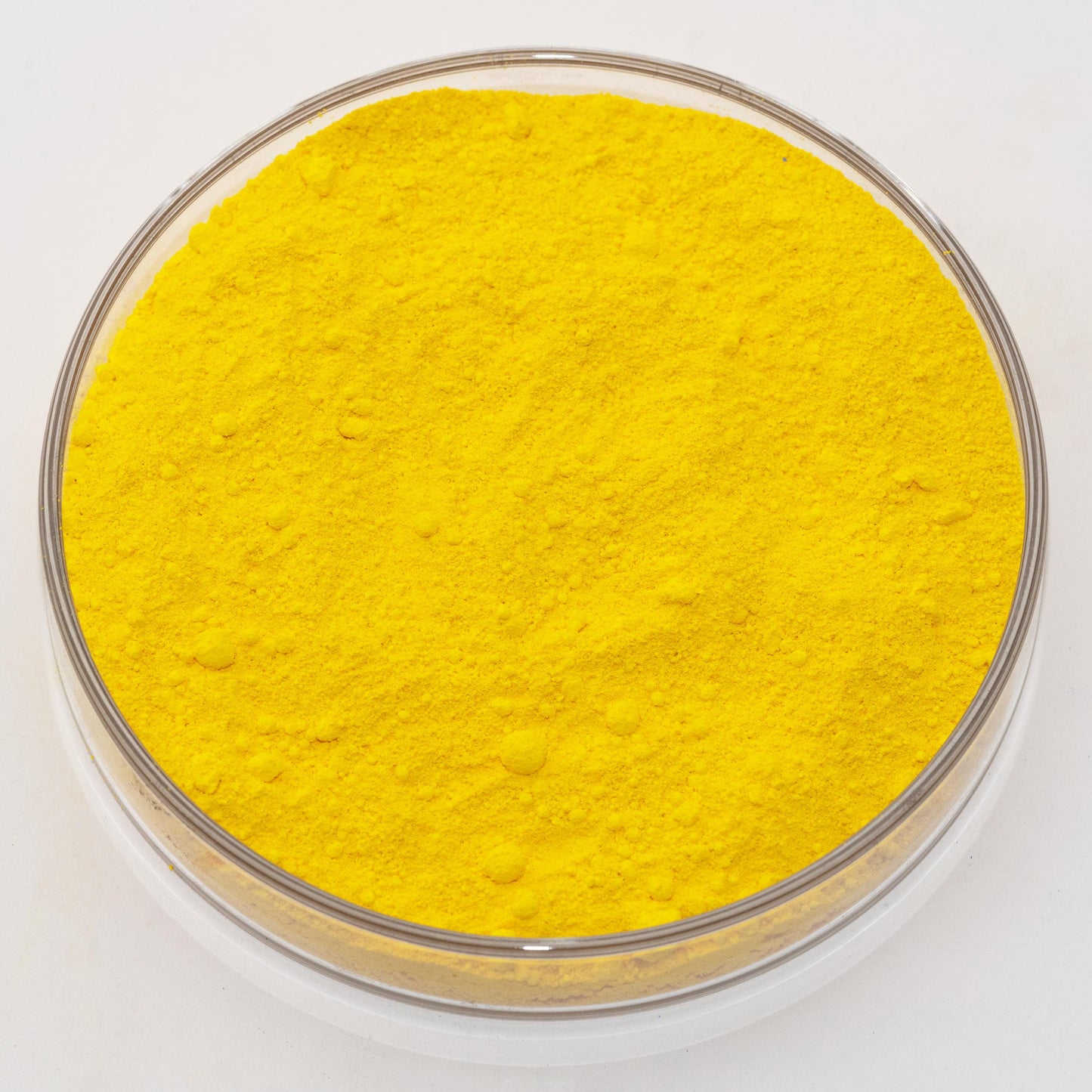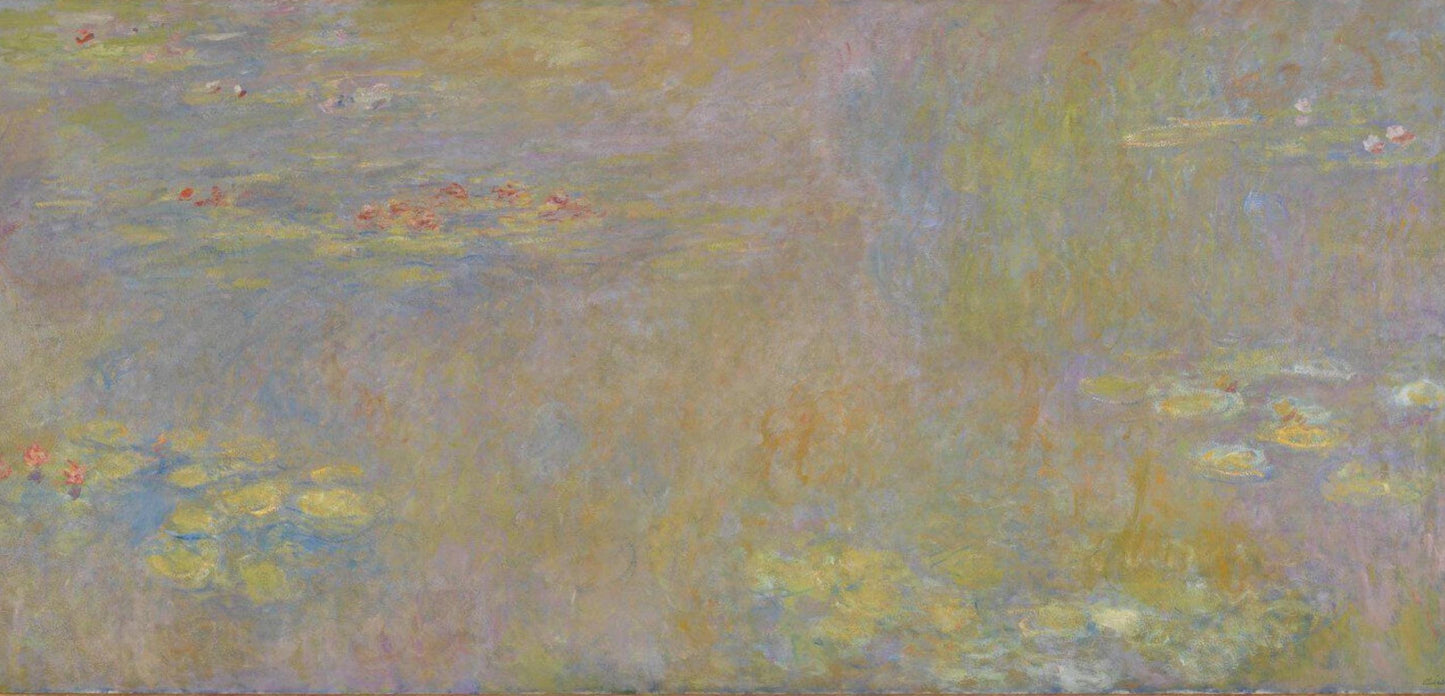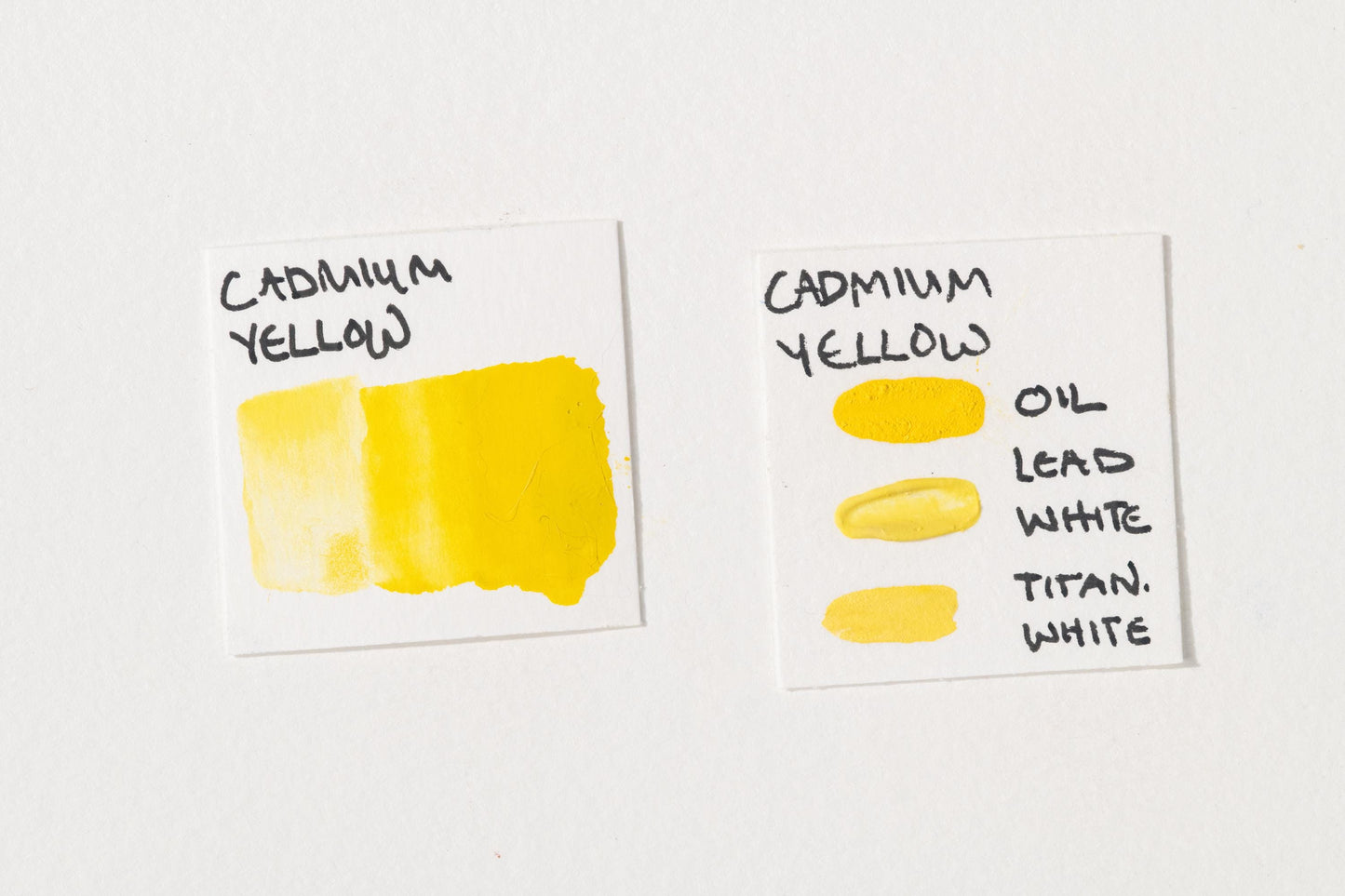Cadmium Yellow Medium
Cadmium Yellow Medium
Couldn't load pickup availability
Share



See Health Information
Description
Cadmium Yellow is a created single pigment created through a process of precipitating cadmium sulfide, producing a rich, highly saturated yellow with excellent opacity and durability. This pigment is known for its bright, warm yellow tone, extremely high chroma, and strong tinting strength. It is widely used in painting due to its smooth consistency and ability to create vivid, pure color mixtures.
Cadmium Yellow has exceptional lightfastness, making it highly durable for both classical and contemporary artwork. It blends seamlessly with other pigments, offering brilliant, warm hues in painting. Its opaque nature allows for strong coverage and clean, bright color mixing in oil, watercolor, and tempera applications. Compared to organic yellows such as Hansa Yellow, Cadmium Yellow provides greater opacity and a richer, more saturated tone, making it ideal for bold compositions and layering.
History
Bright, stable yellow pigments have been sought after by artists for centuries, with early alternatives including toxic lead-based yellows and unstable organic yellows.
During the early 19th century, cadmium-based pigments were first discovered as byproducts of zinc refining. In 1817, Friedrich Stromeyer identified cadmium, and by 1840, chemists had developed Cadmium Yellow (cadmium sulfide) as a pigment.
In the late 19th and early 20th centuries, Cadmium Yellow quickly gained popularity among artists, replacing hazardous lead chromate-based yellows (Chrome Yellow). It became a favored pigment among the Impressionists and later Modernist painters due to its brilliance, opacity, and superior lightfastness. Artists such as Vincent van Gogh and Henri Matisse took advantage of its vibrant intensity. In the pictured artwork 'Water Lilies' by Monet, cadmium yellow is used in thick impasto to create the rich yellows of the water lilies as well as mixed with blues such as cobalt blue and created French ultramarine to create greens and blues.
By the mid-20th century, Cadmium Yellow became a standard pigment in professional artist palettes across multiple mediums, including oil, acrylic, watercolor, and tempera. While concerns about cadmium toxicity led to the development of alternatives like Arylide Yellow, Cadmium Yellow remains a preferred pigment for its unmatched depth, permanence, and performance.
Today, Cadmium Yellow is carefully regulated for safety but continues to be widely used in fine art due to its historical significance and superior color properties.
Health and Safety
Warnings:
CANCER AGENT.
INHALATION MAY PRODUCE CANCER.
EXPOSURE MAY CAUSE HARM TO THE PREGNANT PEOPLE OR DEVELOPING FETUS.
INHALATION MAY CAUSE LUNG DAMAGE.
CONTAINS CADMIUM.
Precautions:
Keep out of reach of children and pets.
Do not consume.
Not for cosmetic or food usage.
Do not spray apply.
For further health information contact a poison control center.
Use care when handling dry pigments and avoid dust formation.
Use particular caution with fibrous, fine, or toxic pigments.
Do not eat, drink, or smoke near dry pigments.
Avoid breathing in pigment dust and use a NIOSH-certified dust respirator with sufficient rating for dry pigment.
Wash hands immediately after use or handling.
If dust is likely, always wear protective clothing to keep out of eyes, lungs, off skin, and out of any contact as well as keep area ventilated.
This product may contain chemicals known by the State of California to cause cancer, birth defects, or reproductive harm.
Warnings and bottle information are abbreviated.
Pigment Information
Pigment Type: Synthetic (Cadmium Sulfide) (CdS)
Suitable Mediums: Watercolor, Oil, Tempera, Acrylic
Lightfastness: Best
Opacity: Opaque
Other Names: Cadmium Sulfide Yellow, Permanent Yellow, Cadmium Lemon (lighter variations)
Color Index Code: PY35
Image: 'Water-Lilies' by Monet from the National Gallery



